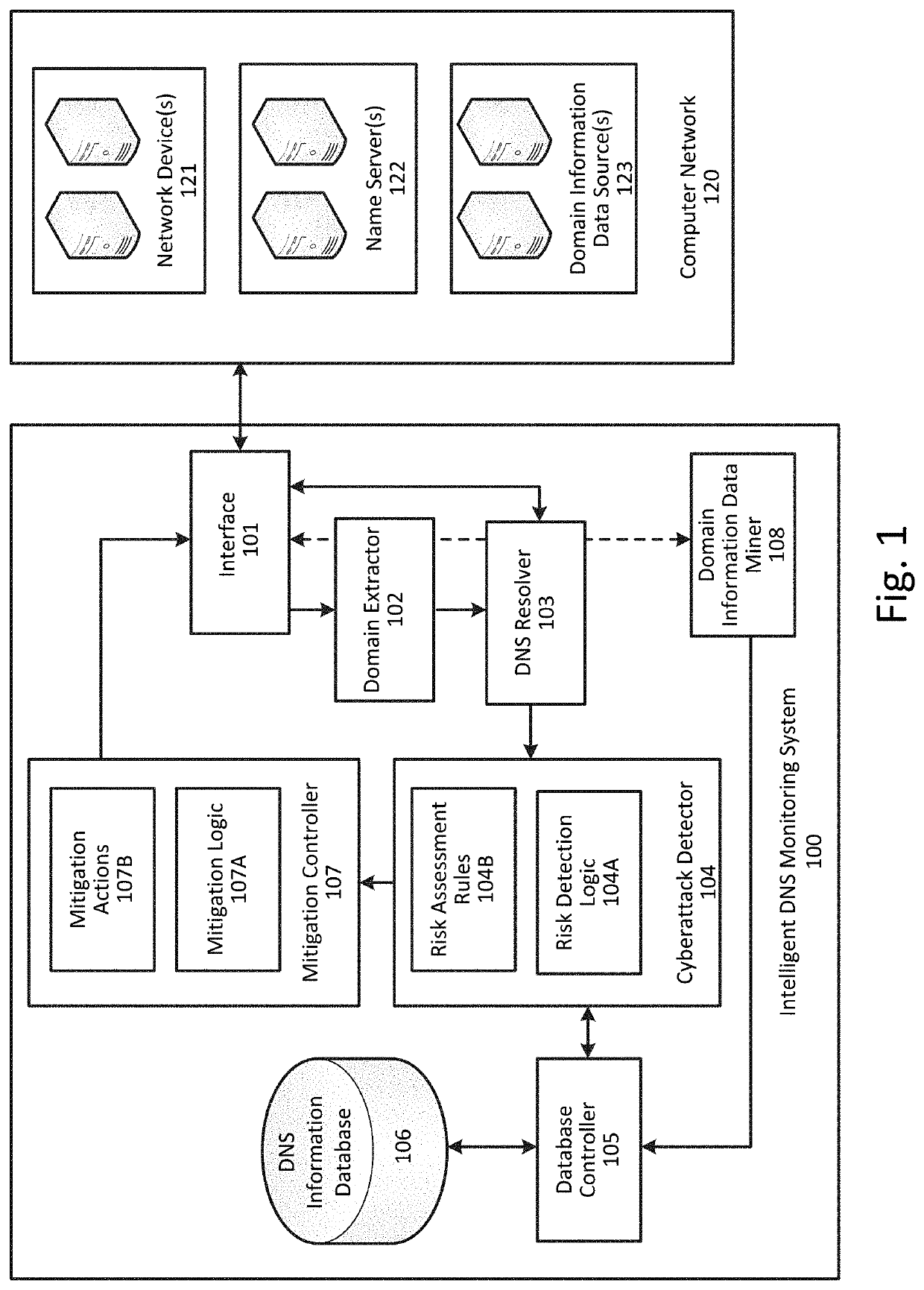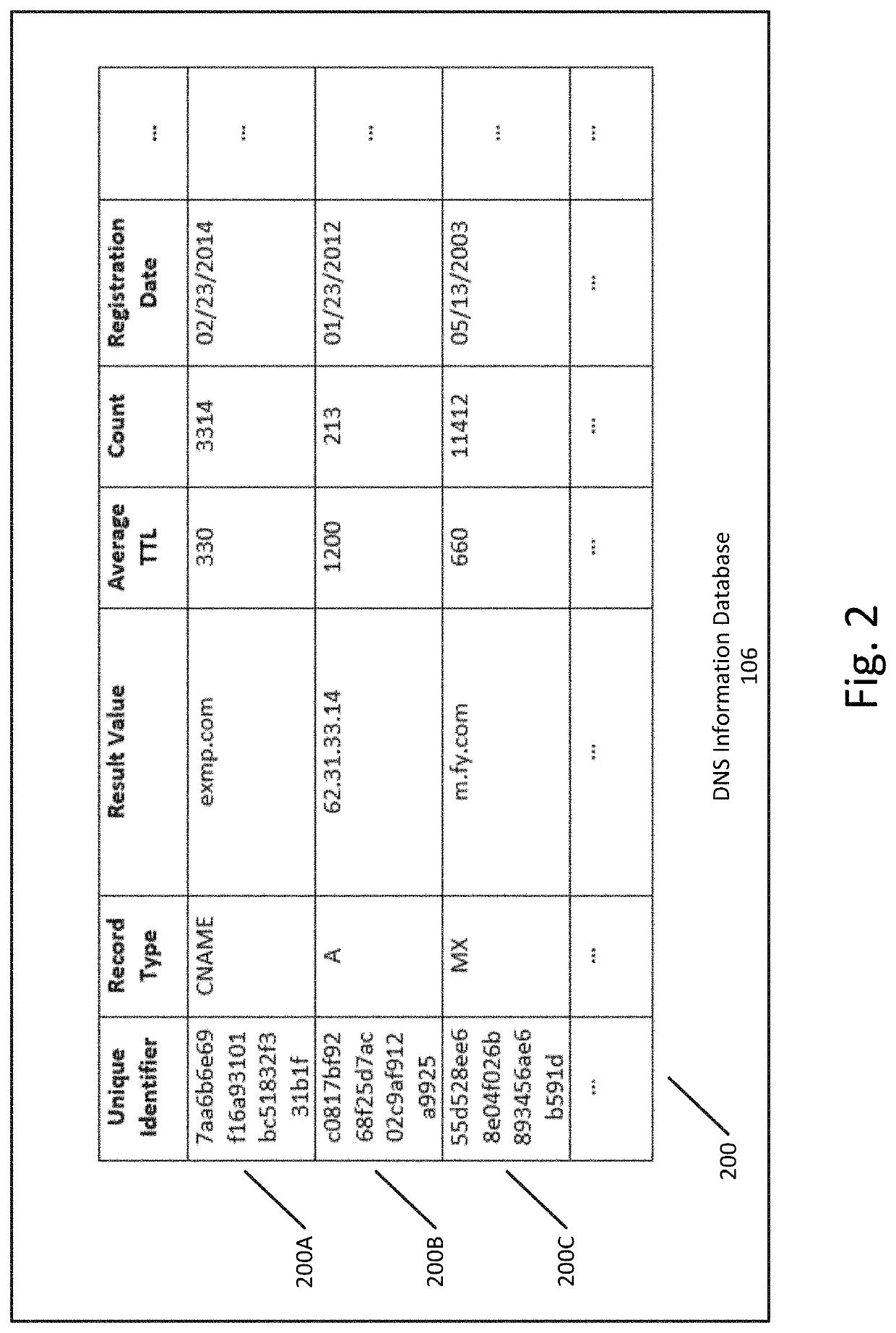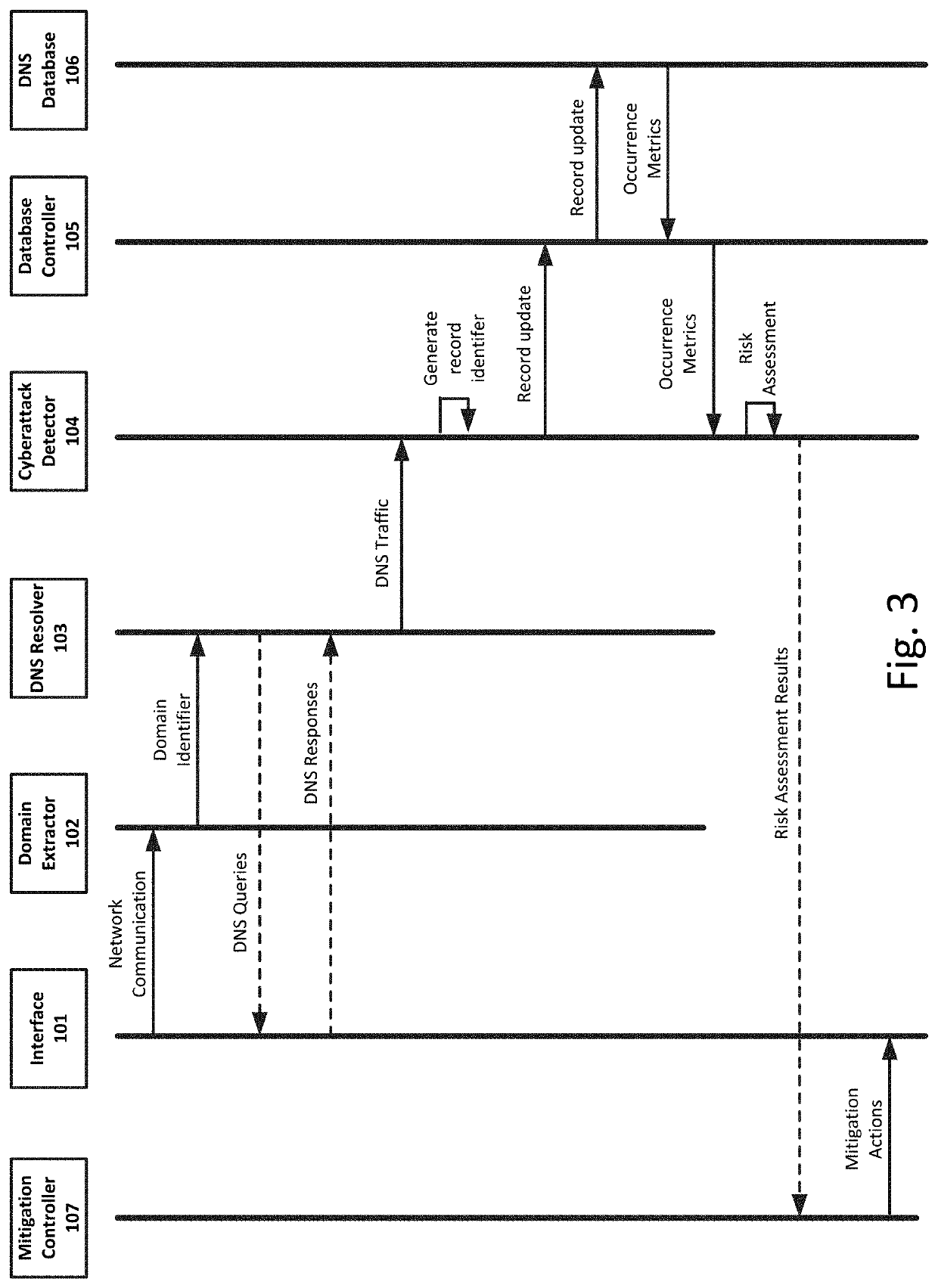Intelligent system for mitigating cybersecurity risk by analyzing domain name system traffic
a domain name system and intelligent technology, applied in the field of intelligent systems for mitigating cybersecurity risk by analyzing domain name system traffic, can solve the problems of inherently insecure, many email systems do not have built-in mechanisms, and may be attacked, so as to detect and mitigate cybersecurity risks, and mitigate cybersecurity risks
- Summary
- Abstract
- Description
- Claims
- Application Information
AI Technical Summary
Benefits of technology
Problems solved by technology
Method used
Image
Examples
Embodiment Construction
[0020]While methods, apparatuses, and computer-readable media are described herein by way of examples and embodiments, those skilled in the art recognize that methods, apparatuses, and computer-readable media for mitigating cybersecurity risk by analyzing domain name system (DNS) traffic are not limited to the embodiments or drawings described. It should be understood that the drawings and description are not intended to be limited to the particular forms disclosed. Rather, the intention is to cover all modifications, equivalents and alternatives falling within the spirit and scope of the appended claims. Any headings used herein are for organizational purposes only and are not meant to limit the scope of the description or the claims. As used herein, the word “can” is used in a permissive sense (i.e., meaning having the potential to) rather than the mandatory sense (i.e., meaning must). Similarly, the words “include,”“including,”“includes”, “comprise,”“comprises,” and “comprising” ...
PUM
 Login to View More
Login to View More Abstract
Description
Claims
Application Information
 Login to View More
Login to View More - R&D
- Intellectual Property
- Life Sciences
- Materials
- Tech Scout
- Unparalleled Data Quality
- Higher Quality Content
- 60% Fewer Hallucinations
Browse by: Latest US Patents, China's latest patents, Technical Efficacy Thesaurus, Application Domain, Technology Topic, Popular Technical Reports.
© 2025 PatSnap. All rights reserved.Legal|Privacy policy|Modern Slavery Act Transparency Statement|Sitemap|About US| Contact US: help@patsnap.com



